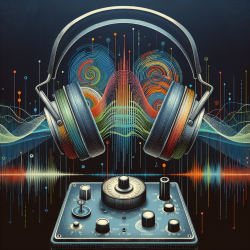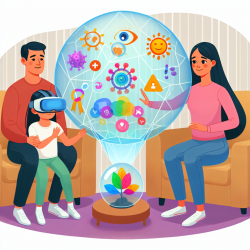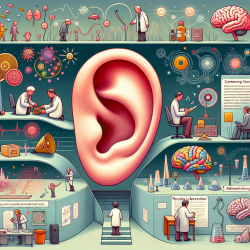In the realm of audiometry, the quest for precision and reliability in hearing assessments is paramount. The research paper "Test Conditions, Stimuli, and Calibration Values" by Leonard E. Cornelisse and Mario J. Moroso provides critical insights into achieving these objectives through the careful selection and calibration of sound field stimuli. This blog post aims to distill the essence of their findings to help practitioners enhance their audiometric testing techniques.
The Challenge of Sound Field Audiometry
Sound field audiometry is essential for assessing a person's hearing ability in a space that mimics real-world listening environments. However, the lack of standardization in test conditions and stimuli poses significant challenges. Cornelisse and Moroso's research sheds light on the complexities of selecting appropriate stimuli and calibration values to ensure accurate and reliable testing outcomes.
Optimal Test Conditions and Stimuli
The paper emphasizes the importance of selecting the right type of stimuli for sound field testing, considering factors like head movement and the acoustics of the testing environment. Pure tones, frequency modulated (FM) tones, and narrow bands of noise are discussed, with a focus on their advantages and limitations in different testing scenarios.
For instance, pure tones are ideal for frequency-specific testing but are not suitable for sound field testing in reverberant fields due to standing wave production. On the other hand, complex stimuli, such as FM tones and narrow bands of noise, offer solutions to overcome these challenges. The paper provides detailed guidance on selecting stimuli that balance the need for frequency specificity with the need to minimize sound field variability.
Calibration Values and Techniques
Another critical aspect covered is the calibration of stimuli for sound field testing. The authors discuss the concept of Reference Equivalent Threshold Sound Pressure Levels (RETSPLs) and how they differ from the calibration values used for earphones. They also offer practical advice on calibrating the sound field, including the selection of loudspeaker positions and the measurement of sound field variability.
Specifically, the research suggests using RETSPLs for frequency modulated tones and narrow bands of noise, tailored to the loudspeaker's position in the testing environment. This approach ensures that the sound pressure level at the listener's eardrum is consistent with thresholds obtained using earphones, thereby enhancing the accuracy of sound field audiometry.
Practical Applications for Practitioners
Implementing the outcomes of Cornelisse and Moroso's research can significantly improve the quality of audiometric testing. Practitioners are encouraged to:
- Choose stimuli that best match the testing environment and the specific needs of the assessment.
- Calibrate the sound field meticulously, using the suggested RETSPL values and calibration techniques.
- Consider the test signal's bandwidth and modulation characteristics to ensure accurate threshold determination.
- Regularly evaluate the sound field setup to ensure that it meets the recommended standards for sound field variability and calibration accuracy.
By adhering to these guidelines, audiologists and hearing care professionals can enhance the reliability and validity of their sound field audiometric tests, leading to better hearing assessments and outcomes for their clients.
In conclusion, "Test Conditions, Stimuli, and Calibration Values" offers invaluable guidance for optimizing sound field audiometry. By implementing the recommended practices, practitioners can overcome the challenges associated with sound field testing and achieve more accurate and reliable results.
For those interested in delving deeper into the technical aspects and recommendations provided by Cornelisse and Moroso, reading the original research paper is highly recommended. To read the original research paper, please follow this link: Test Conditions, Stimuli, and Calibration Values.










